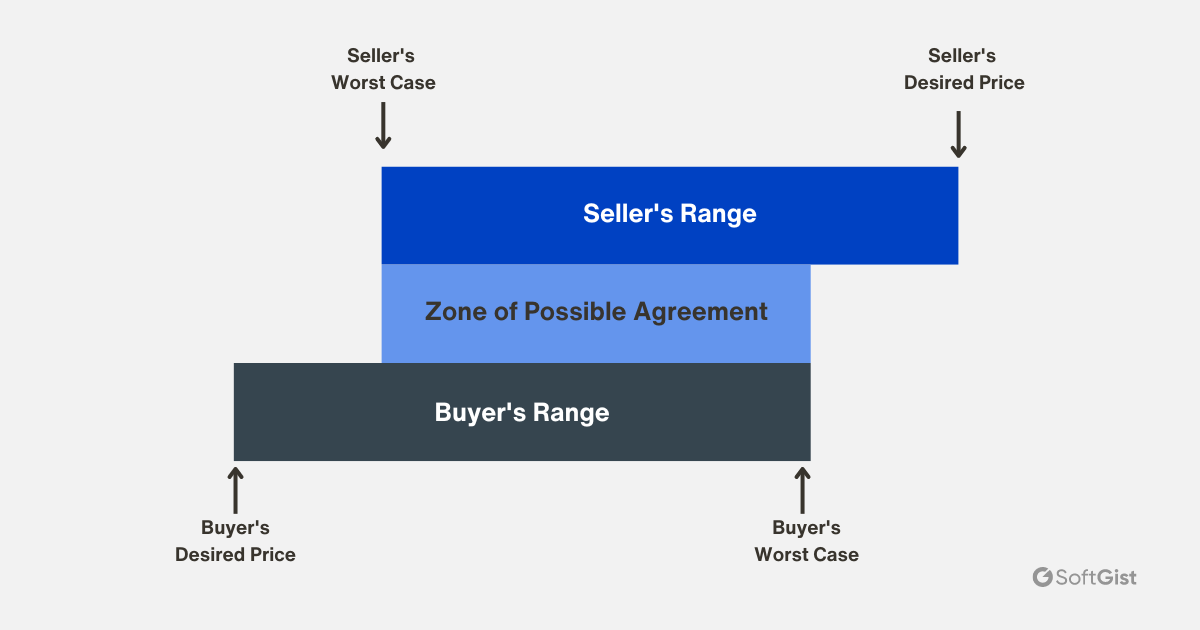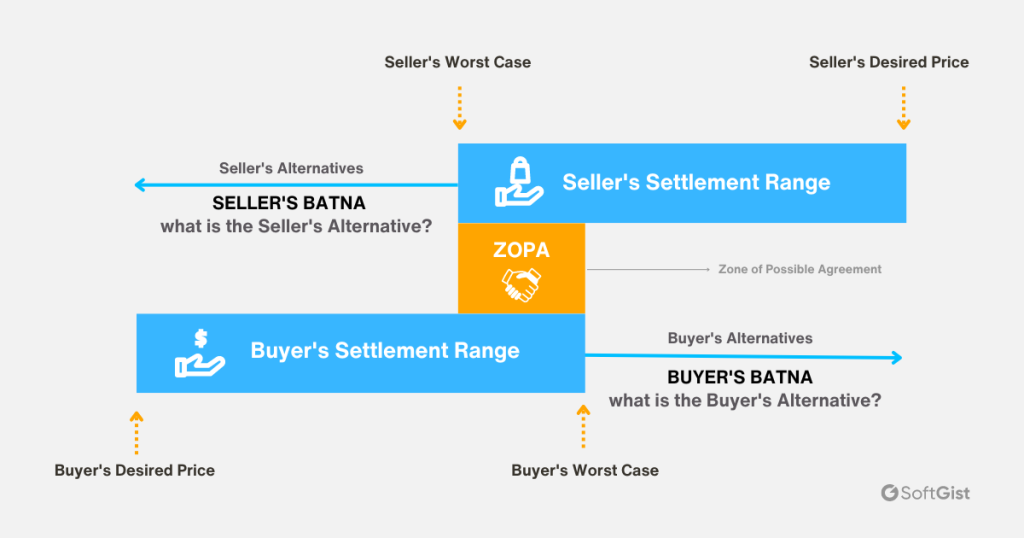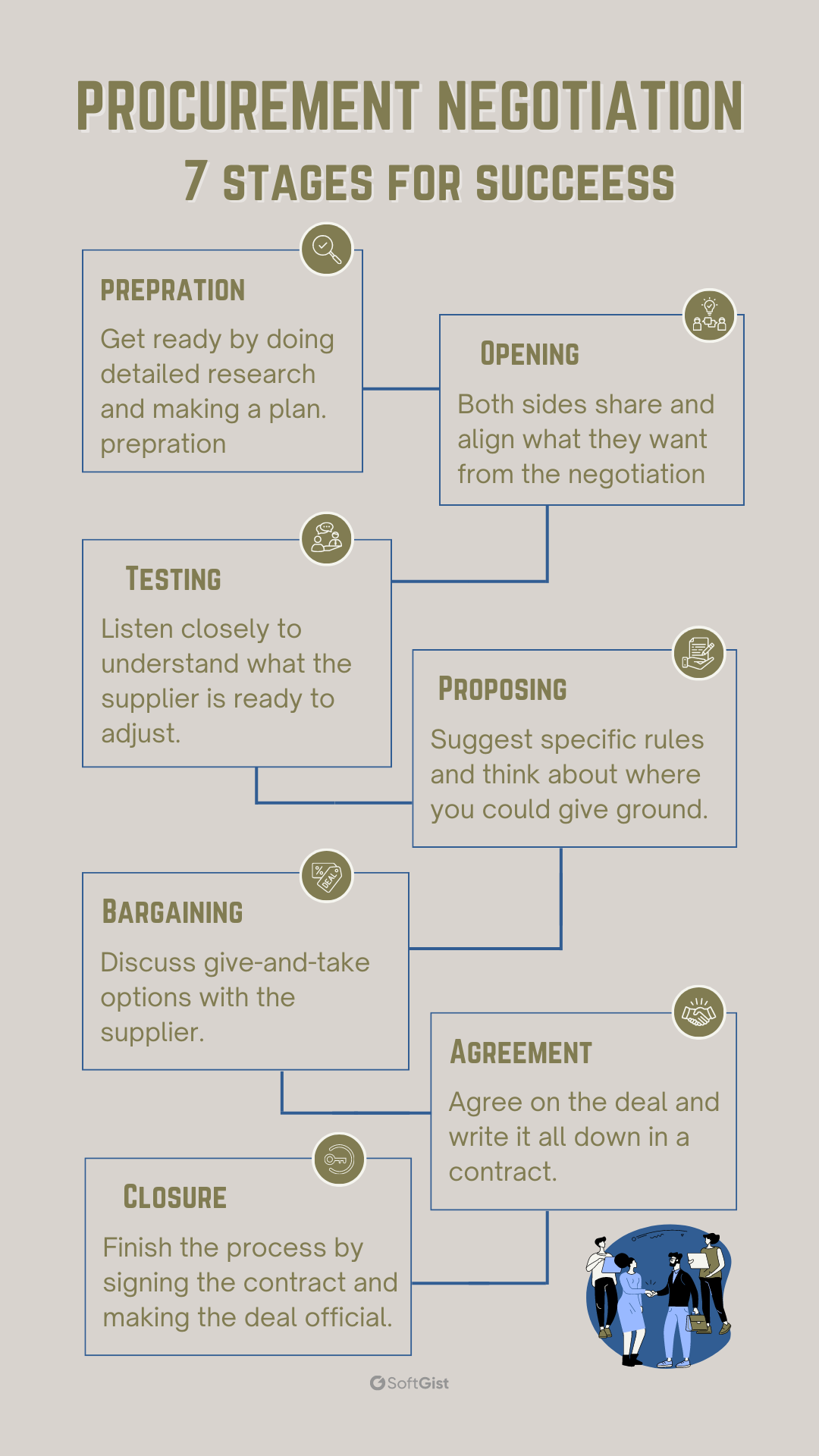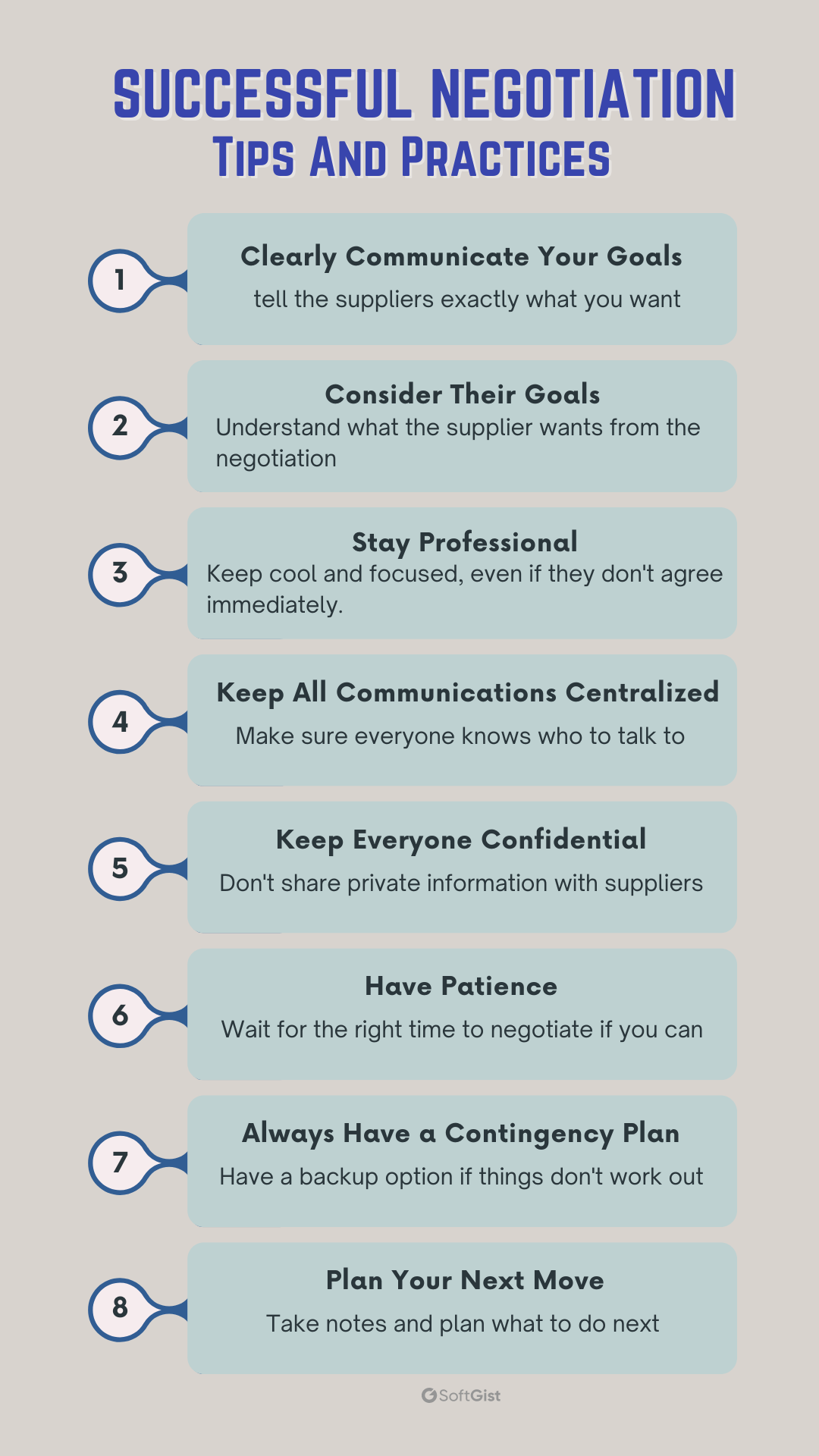Procurement Negotiation 101: Essential Skills and Strategies
Updated May 28, 2024
Published July 24, 2023

Are you looking to get the best deals from suppliers?
Negotiating with vendors is crucial for business growth. But bargaining can be intimidating. Some avoid negotiations to prevent friction.
Yet strong supplier relationships require give-and-take. The goal is win-win contracts through trust and building partnerships. Savvy negotiation opens opportunities.
This guide breaks down the basics. Learn the key steps for negotiating mutually beneficial agreements. Understand how preparation and communication lead to successful negotiations.
You can negotiate win-win contracts that help your business thrive with the right approach. Read on to learn how.
Procurement Negotiation Basics
Negotiation helps procurement teams get good deals with suppliers. They negotiate when renewing an existing contract or starting a new one.
Through negotiation, buyers can get better prices, payment terms, quality, timelines, and delivery dates. Good negotiation leads to long partnerships between buyers and sellers. Both should aim for a “win-win” where each side’s needs are met.
But negotiations can fail if the two sides have different goals. For example, the seller may only care about their profits. They don’t think about the buyer’s need to cut costs.
For successful negotiations, buyers need to understand what matters most to sellers. Buyers should plan out best case, acceptable, and walk away scenarios before talks. This gives a range to anchor discussions.
Strong communication skills help find win-win solutions. Being creative and flexible uncovers new options. The key is working together to meet both sides’ core needs.
With preparation and collaboration, buyers and sellers can reach deals that benefit both sides. The language is simplified per your instructions to be clear, concise, and readable. Let me know if you would like me to modify the explanation further.
Benefits of Procurement Negotiation
Procurement negotiation is needed to bring the buyer and vendor together to establish a collaborative master agreement. Here are some benefits of negotiating a procurement:
Lower Cost
Negotiating with suppliers can lower costs in procurement contracts. It helps find overlooked places where current agreement costs can be reduced. Negotiations also let you ask for better prices on new deals. The main benefit is using the negotiation process proactively to make the supplier’s offer more cost-friendly. This can lead to big long-term savings.
Streamline Contract Management
After you and the supplier agree to a good deal, you may need to examine other contracts outside the main agreement. Negotiations provide an opportunity to review these additional contracts and resolve any issues.
You can also integrate new contracts from the supplier into the master agreement you already negotiated. Include a provision that the terms of the master agreement take priority over conflicting terms in other contracts.
This allows negotiations to streamline contract management in several ways:
Negotiations let you inspect supplementary contracts outside the main deal and address any problems within them. You can consolidate new supplier contracts into the primary negotiated agreement. And you can establish the master agreement’s terms as overriding any contradictory clauses in secondary contracts.
Boost Profits
Productive negotiations allow you to secure lower prices from suppliers. This improves deal terms for your business.
Aim for mutually beneficial agreements, not just the lowest price. Offer increased volume, prompt payments, or better forecasting to make it worthwhile for the supplier too.
Securing better pricing through negotiations enables bigger profit margins and frees up the budget for other investments.
Build Relationships
Successful negotiations often create robust and long-lasting supplier relationships. When both parties collaborate to find mutually beneficial solutions, trust and partnership are built. This leads to improved service and faster response times on future deals. Suppliers are more willing to go the extra mile when the relationship is positive.
Resolve Issues
Having open discussions about current and past problems is an effective way to solve them through negotiations. This is especially helpful when your needs are more sophisticated or a supplier has missed expectations on delivery, quality, etc.
Avoid blaming – approach issues as solvable problems to be addressed collaboratively. Your negotiation tactics can uncover win-win solutions that resolve lingering issues while building greater trust.
Reach “Win-win” Situation
The best negotiation ends with an agreement that benefits both parties – a win-win deal. To get there, each side has to compromise to find a “zone of possible agreement.” Have a strong negotiation plan that shows what terms you must have versus what terms you can be flexible on. This allows you to protect your interests while still meeting the supplier’s needs enough to reach a fair deal that works for both of you.

Although not easy, look for creative ways to add value for the supplier that will benefit your company too. For example, you could offer to increase purchase volume in exchange for better pricing. This collaborative spirit leads to good deals that help build long-term business relationships.
Essential Skills for Procurement Negotiations
Successful negotiations require having the right mix of soft skills, emotional intelligence, and procurement experience. Here are some key skills every negotiator should develop:
Research and Preparation
Being well-prepared through comprehensive research is very helpful. Stay on top of market trends, pricing, competing vendors, and other important details to gain an advantage at the negotiating table. Use your attention to detail to ensure you don’t overlook anything. Thorough preparation builds confidence and credibility. Research the other party, understand their motivations and constraints, and prepare counters for their likely offers.
Patience
Having patience allows you to evaluate options carefully instead of rushing decisions. It shows commitment to an open dialogue and win-win solution, not just closing fast. Patience enables thoughtful consideration of proposals vs quick reactions. Avoid pressuring the other side and let the process unfold.
Communication Skills
Good communication skills are essential. Clearly explain your needs, goals, and values. Actively listen to understand the other perspective. Ask thoughtful questions. This fosters an open, collaborative environment. Adjust your style to the other negotiator. Use positive, diplomatic language.
Strategic Thinking
Careful planning allows you to secure better deals and achieve goals. Understand the big picture – know your best alternative to a negotiated agreement (BATNA). Set clear objectives prioritizing must-have elements. Devise an approach leading to favorable outcomes. Anticipate offers and prepare counters. Have target thresholds in mind but avoid anchoring too early. Be flexible in strategy to adapt to changing circumstances.

Problem-Solving
Identifying potential issues and finding creative solutions enables mutually beneficial agreements. This skill is especially valuable when talks get stuck. Remain open-minded to new ideas to overcome obstacles. Don’t assign blame – work collaboratively to analyze problems and find reasonable compromises. Avoid letting egos get in the way of exploring options.
Emotional Control
Stay focused on goals by managing emotions and remaining professional. Don’t get sidetracked by feelings. Set a positive tone through composure. Take breaks if needed. Avoid emotional outbursts or negative body language. Stay calm and think rationally.
Flexibility
Being adaptable shows a willingness to find solutions. Don’t anchor yourself to initial proposals. Consider different options and be open to compromise. Don’t make concessions too early; use flexibility strategically to make progress.
Integrity
Act ethically to build trust and respect. Avoid deception or manipulation. Be transparent about constraints and keep promises. Integrity supports stronger long-term relationships between negotiators.
Seven Stages of Procurement Negotiation
There are seven key stages for a procurement negotiation process:

Stage #1: Preparation
Doing comprehensive preparation is the key first step before starting procurement negotiations. Work closely with your team and stakeholders to make a strategic negotiation plan to get your desired results.
As you get ready, look into these kinds of questions:
- Does the supplier’s product or service fit and support your company’s procurement goals?
- Have you done in-depth research on the supplier and their offered solution?
- Are there any areas where you could compromise without hurting your business or the supplier?
- Beyond just cost, what other things should you focus on during the negotiation?
- What important questions should you prepare to ask the supplier?
- What key information should you aim to get from this meeting to report back to leadership?
Thoroughly going through these questions will ensure you start negotiations well-informed and ready. Proper preparation builds confidence and credibility.
Stage #2: Opening
After thorough preparation, you reach the opening phase. Here both parties share their goals for the negotiation. If the supplier has very different plans than your team, this gets identified early to avoid later misunderstandings.
The opening stage is key for getting everyone on the same page before diving into the negotiation details.
Stage #3: Testing
In the testing stage, your procurement team and the supplier discuss potential adjustments to the initial plans outlined earlier in the negotiation. Active listening skills are critical during this phase.
Pay close attention to the supplier’s answers to fully understand what factors are most important to them. This reveals areas where they may have the flexibility to compromise and points of leverage you can use in the negotiation. Take notes and listen for subtle cues that provide insights into their position.
Stage #4: Proposing
In the proposing stage, you present specific terms and conditions to the supplier to work toward your ideal negotiation outcomes, and they will do the same. Refer to the notes you took during previous stages to inform your strategy. Think carefully about what concessions you may be willing to make while still protecting your most vital interests.
Consider taking a brief break to discuss the proposed compromises privately with your negotiation team before proceeding to the next step. This allows you to get feedback, refine your approach if needed, and prepare counterproposals.
Stage #5: Bargaining
The bargaining stage involves talking about possible compromises and tradeoffs with the supplier. Apply important things you learned earlier, especially in testing, to see where the supplier might be flexible.
Aim to work together to understand all the potential concessions fully. Avoid becoming stubborn – stay open-minded when negotiating compromises.
Stage #6: Agreement
The agreement stage happens when both sides have reached a solution that meets their main needs in the negotiation. While a handshake deal to confirm the agreement may feel good, having a legally binding written contract is highly recommended now.
The contract should state all the agreed terms and be signed by authorized people on both sides. This protects against problems if key staff leave the supplier’s company.
Stage #7: Closure
The final agreed-upon written contract is signed in the closure stage, finishing the deal. This completes the procurement negotiation process. Both sides can feel good moving forward based on the formal agreement.
Expert Tips and Practices for Successful Negotiation

Clearly Communicate Your Goals
When entering into any negotiation, it is important to first establish your goals and objectives and communicate them clearly to suppliers. Rather than proposing vague or indefinite terms, try to be as specific as possible about what you want to achieve. Thoroughly researching your goals ahead of time can help avoid making the negotiation process unproductive.
Consider Their Goals
During a negotiation, it is imperative to identify and understand what the supplier’s goals and objectives are. For example, if your aim is to reduce costs but their aim is to maximize profits, they may push back on lowering prices. In this case, you could propose negotiating on additional features, discounts, or faster delivery of services as tradeoffs.
Stay Professional
If the other party remains stubborn or inflexible to the terms you propose, it is important to keep calm and professional, staying focused on the ultimate goal of reaching a mutually beneficial agreement. Maintaining composure increases the likelihood of the vendor eventually accepting a condition close to your intended outcome.
Keep All Communications Centralized
Since most established vendors will have multiple contacts within their company, it is important for you and other stakeholders to have clearly identified direct contacts when going through the procurement process. This helps promote an open and transparent negotiation environment where all key players are on the same page.
Keep Everyone Confidential
While it is acceptable to let vendors know you are exploring deals with other parties, it is prudent to keep sensitive details private and confidential. Suppliers are often highly aware of competitors’ tactics, which could give them an unfair advantage if too much is shared.
Have Patience
If timing flexibility allows, scheduling negotiations near the end of a month, quarter, or year can be advantageous since sales professionals are often under pressure to offer discounts to meet targets. However, this approach should only be used if you can confidently follow through on a purchase at the scheduled timeframe.
Always Have a Contingency Plan
It is wise to always have a contingency plan or “Plan B” in case negotiations fail to result in an agreement. Procurement professionals refer to this as a “best alternative to negotiated agreement” or BATNA. Avoid rejecting other potential vendor partners until current talks reach an impasse.
Plan Your Next Move
After completing a negotiation, take notes on key details like agreed-upon terms and outstanding items needing further discussion. Summarize these for involved stakeholders so next steps can be planned. This includes identifying topics to revisit like integration requirements and timelines.
Final Thoughts
Developing excellent negotiation skills is a wise investment for procurement teams. With preparation and practice, professionals can confidently secure win-win partnerships through interest-based negotiations.
Skilled negotiators actively listen, creatively problem-solve, and focus on collaboration. They build trust and alignment with suppliers. This leads to mutual gains – optimized costs, quality, service levels, and strengthened supply chains.
While challenging at times, mastering negotiation is essential for procuring top-tier agreements that reduce risk and drive competitive advantage. The long-term benefits of developing negotiator expertise make it well worth the effort.
Share This Post
Ada Rivers
Ada Rivers is a senior writer and marketer with a Master’s in Global Marketing. She enjoys helping businesses reach their audience. In her free time, she likes hiking, cooking, and practicing yoga.
Allow cookies
This website uses cookies to enhance the user experience and for essential analytics purposes. By continuing to use the site, you agree to our use of cookies.
